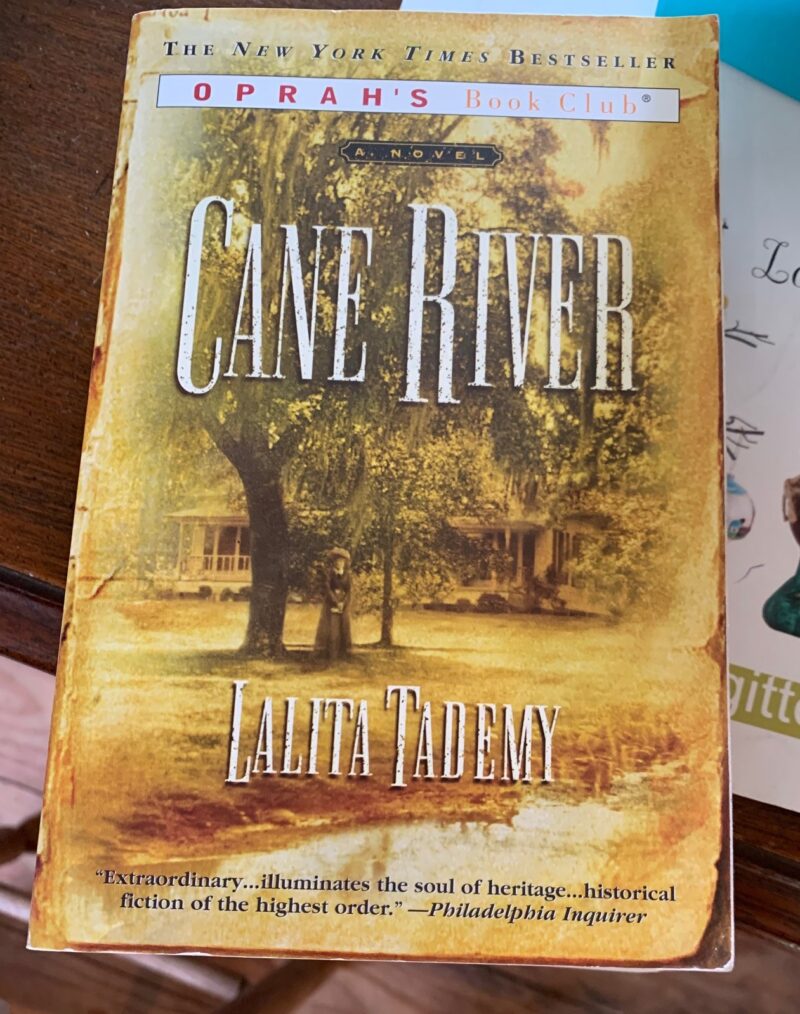Earth + Ether Press’s last post reflected upon the inspiration quietly occupying Natchitoches, Louisiana and the Cane River National Heritage Area. Cammie Henry’s library at Melrose Plantation sparked this passion project to connect old places with their begotten literature. For this first experiment, I read three books written in and/or inspired by the Cane River area.
These are no ordinary book reviews. You can find plenty of those with a visit to your local Google page. Instead, Earth + Ether Press’s studies focus on the depth of each writer’s connection to a place, the effect of the place on the story, and how integral the place is to the outcome of the story. Each book is given a Place-ment Value (get it?!), scaled 1 to 10. Higher scores indicate a deeper connection of place and story (i.e. must-reads for preservationists and place-supporters like us).
Cane River, Lalita Tademy (Warner Books, 2001)
Place-ment Value: 8
Aside from standing in the Melrose library surrounded by walls of books by writers who had been equally inspired by the Cane River area, there was another pivotal moment during my Cane River visit. While purchasing our tour tickets in the Melrose gift shop, I spotted the mysterious sephia cover of Lalita Tademy’s Cane River and was instantly intrigued. I snapped a picture and purchased a copy the next day. (I always purchase first and/or signed editions if available from AbeBooks.com. My heirs will thank me one day.)
Cane River was the result of Tademy’s passion project. She left her executive career in Silicon Valley to pursue researching her family’s history and full-time writing.
The novel follows Tademy’s ancestors: Elisabeth (sold as a slave from Virginia to the Derbanne family on a mid-size Cane River plantation); Suzette (Elisabeth’s daughter); Philomene (Suzette’s daughter by a white Frenchman); and Emily (Philomene’s daughter by a white plantation owner), eventually ending with Tademy herself. Selected historical photographs and documents from which the narrative was drawn are interspersed throughout the book, providing a delightful reprieve from a complicated family tree.
The story of Tademy’s ascendants is set at several places along Cane River, including Rosedew Plantation, which Tademy described as “a one-story house of wood and brick frame, stuccoed in white, and topped with a long, sloping roof.” The Metoyers’ St. Augustine Church and Melrose Plantation make cameo appearances as important places to the gens de couleur libre (freed people of color) community, which became known as Isle Brevelle. It is this aspect of the book which most increases its Place-ment Value.
While Tademy’s descriptions of the agricultural and forested landscapes genuinely reflect the area (the book offers less for the architecturally inclined), the observations of her Creole heritage best connect readers to this special pocket of Louisiana. In describing her family’s “bleaching of the line,” as one ancestor observes in the book, Tademy explores the characters’ complicated relationship with their race. Whether to embrace being Black or White, rather than somewhere in between, is a decision that particularly haunts the latter characters of the book. Tademy’s story of T.O. (Emily’s son with her life-long white French lover, and Tademy’s own grandfather) is especially illustrative.
Descendants of the gens de couleur libre and mixed-race families as described in Cane River still occupy that special region for which the book was named. They still worship at and commune around St. Augustine. They are a close-knit group who share traditional activities, such as trail rides, candlelight vigils, and plays, with heritage music, dancing, storytelling, and cuisine.
Cane River is a must-read for people who appreciate place as a multi-dimensional concept. The characters are memorable for the mere fact of their existence. Perhaps that’s all Ms. Tademy hoped to achieve. Regardless, the novel deserves a place (enough with the puns!) on your place reading list. After all, a place without the substance of its people (or its people of substance?) isn’t worth saving.

